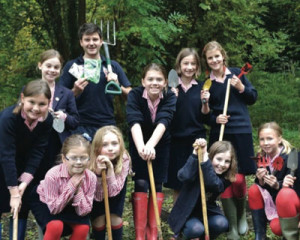Mr Bittlekirk is Missing : Sporting Clays Article by Dan Schindler : The Paragon School of Sporting
Mr. Bittlekirk is, for the most part, your average, agreeable guy. He likes football, baseball and fast food. His physically demanding job keeps him in good shape as his handshake and physique implied. Rugged face and stature, Mr. Bittlekirk was outwardly personable but I detected a serious edge about him too. Over coffee and a sweet-roll we talked about our upcoming session.
 I like to gather information about my student before guns are loaded and targets fly. I inquired about goals, priorities, targets shot per month and problem areas, all to better understand who Mr. Bittlekirk was and where we were going.
I like to gather information about my student before guns are loaded and targets fly. I inquired about goals, priorities, targets shot per month and problem areas, all to better understand who Mr. Bittlekirk was and where we were going.
His questions were insightful and showed forethought coming into his lesson. He’d studied under a good teacher who, he felt, had taken him as far as he could. He was here to learn, understood there was no magic involved and that progress would come only after some work and possibly change. We were off to a good start.
A strong intermediate shooter, Mr. Bittlekirk was straightforward in his approach to shooting. There were a few surprises for Mr. Bittlekirk along the way and that’s what gave me the idea to write this piece. I’d like to share with you some of the dialogue, questions and answers as we moved forward and through his time with me. As with most men, it isn’t just about shooting methods. It always goes a little deeper than that and I don’t mean that to be derogatory. It’s just that our gender brings certain ideas and beliefs to the table. Which brings us to his first comment as he took his gun out of the slip.
“Dan, I really don’t like to miss.”
“Why’s that?”
“Because I get frustrated easily after a miss and everything seems to go down hill from there.”
I didn’t wince when I heard it but knew that I would be devoting some of our time to sorting this out.
It didn’t take long for a teaching opportunity to present itself. The target didn’t look all that difficult and actually wasn’t. But it had a trick in it he didn’t spot right away and the target curled away, under his shotstring every time. Four times to be exact. Before answering his question about where he was missing, I asked him to take a few seconds to consider why. We’d already discussed the solution on the previous field. Discouraged, he shrugged his shoulders. I again suggested the small adjustment to the upcoming shot. Closed to suggestions and bent on the unpleasantness I knew was coming, he wasn’t listening. After all, he was frustrated.
“The target’s not that hard Dan. I know I can break it!”
Mr. Bittlekirk was visibly determined. Arms and forehead knotted up, three more shots went astray.
I called a time out and asked politely, “What is our objective here?”
Looking at me like I was an alien he said, “To break the target.” Now I’m used to that answer and waited for the right moment.
“The objective here is to use good form.” Tired from struggling, he thought about that and nodded. Once more, I suggested the small adjustment in his swing. X. X. X. All was well in his world again. But I also knew this was only until next time, which would likely be soon. So, to reinforce our objective I shared with him that breaking targets is very seductive. It’s completely natural and downright logical to believe that because we did break the target, what we’re doing must be right. This isn’t always the case as evidenced by our misses, caused by the inconsistencies in our game. Until we can expose and account for those inconsistencies we’re doomed to repeat them. That’s where performance plateaus come from. I reminded him that this wasn’t a criticism, just a truth we eventually have to confront if we’re serious about improvement.
Sporting clays continues to be an elegant sport born of long tradition, fulfilling our wingshooting passion to experience the wing and shot. Feather and clay, inescapably tied, grants us so many learning opportunities to hone our skills, a path of personal growth that affords us a refreshing, unbiased look at ourselves. Time and again, my students have learned how entirely more capable they are than once thought. The American sporting clays shooter can honestly and proudly say, in a very short period, he has indeed advanced to take his rightful place among the best in the world. And, let’s not forget, no one is having more fun out here than you and I are.
The events, times, places and persons in my articles are all true. While I changed a name here and there, 100% of the information came from my experiences with you. Each tournament, each lesson, each experience with you generated the material for my work. I am grateful.










